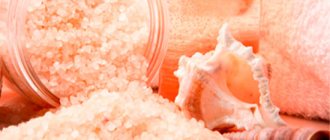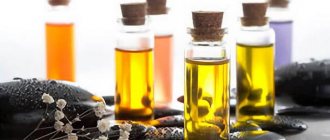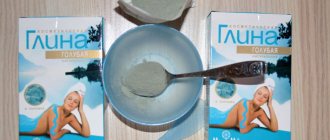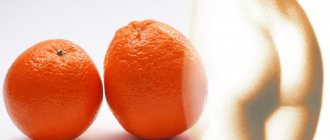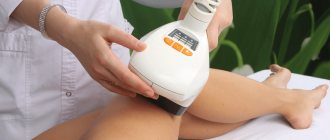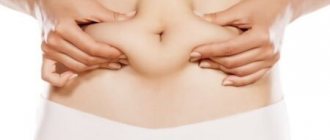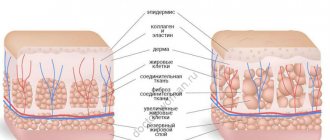Types of turpentine baths
Turpentine baths are considered effective in treating a wide range of ailments. Zalmanov’s technique in its modern interpretation has several varieties. Currently, there are several types of turpentine baths.
White emulsion
Recommended for patients with low blood pressure. When taking a bath, a tingling and burning sensation occurs; this is a normal reaction of the body.
It is important to maintain the water temperature in the range of 37 - 39 degrees. To do this, you need to add hot water every 5-7 minutes.
Turpentine baths based on white turpentine emulsion have extensive beneficial effects on the entire body as a whole. It is expressed as follows:
- after the first session, blood pressure noticeably stabilizes;
- the plasticity of blood vessels increases, thereby creating collateral circulation;
- nutrition of body cells and tissues improves.
Yellow emulsion
Unlike white, yellow turpentine emulsion has a beneficial effect on the body with high blood pressure (140/90 mm Hg), insufficient blood flow, as well as pathological deposits in tendons and joints, in the eye lens.
The decrease in pressure at the time of taking a bath occurs due to the expansion of capillaries. Yellow turpentine causes an increase in temperature and sweating, due to which toxins and waste are removed from the body.
The initial water temperature is 37 degrees, every 2-3 minutes the temperature is increased by 1 degree.
When performing a turpentine bath with yellow emulsion, it is imperative to monitor the patient’s well-being and monitor the pulse and breathing.
Mixed turpentine baths
A turpentine bath with the simultaneous addition of both turpentine emulsions is more effective, provided there are no contraindications. It is also possible to alternate white and yellow baths (a course of 10 procedures will consist of 5 yellow and 5 white).
The doctor calculates the dosage of the turpentine solution individually, based on the patient’s well-being and blood pressure.
Both emulsions, based on turpentine, were invented by Zalmanov. Apart from their differences, they also have similar features. Being a natural extract from the trunks of coniferous plants, turpentine has a pronounced ethereal aroma. Therefore, a bath with such a solution is not only useful, but also pleasant.
The benefits of carbon dioxide baths
Carbon dioxide baths have a complex effect on the body, promoting the following improvements:
- Improved condition of the respiratory system, disappearance of cough and shortness of breath
- Strengthening the heart muscle, normalizing the pulse
- Dilation of capillaries, activation and improvement of blood circulation
- Improved coordination of movements
- Activation of metabolic processes in the brain, increasing mental activity and performance
- Strengthening lipid metabolism, reducing the level of bad cholesterol in the body
Indications and contraindications
As with any other type of treatment, before using a turpentine solution in a bath, you should check for appropriate recommendations. An indication for the procedure may be the presence of one of the following pathologies:
- weak immunity;
- decreased tone and poor performance;
- insufficient metabolism, causing excess weight;
- sinusitis;
- joint pathologies;
- cold intolerance;
- arthritis, arthrosis, intervertebral hernia;
- stretch marks on the skin;
- osteochondrosis;
- varicose veins and the appearance of spider veins.
For these and other pathological conditions, the benefits of a turpentine therapeutic bath will be enormous. Moreover, if there are no contraindications to the use of such a bath.
Who is the procedure contraindicated for?
Contraindications to turpentine baths are severe forms of certain diseases and the following conditions:
- somatic and mental disorders;
- abnormalities in the cardiovascular system;
- general serious condition;
- limited mobility;
- individual intolerance;
- pregnancy.
The benefits of turpentine baths
Guests of the Chabarok sanatorium can take a course of turpentine baths. Those who experienced the beneficial effects of this procedure left only positive reviews. It’s not at all surprising, because the benefits of a water session are obvious:
- restoration of skin and muscle tone;
- favorable thermal effect for the spine and joints;
- normalization of metabolic processes;
- improving blood circulation and joint mobility;
- cleansing of waste and toxins;
- analgesic effect.
The huge advantage of turpentine baths is their safety. Distinguished by their naturalness and versatility, they provide lasting therapeutic results.
However, it is worth remembering that consultation with your doctor is necessary before performing any procedure, even the safest one.
Author of the article:
Plyuto Nina Mikhailovna, general practitioner of the first qualification category.
Literature:
- Ulashchik V.S. Turpentine baths // Physiotherapy. Universal medical encyclopedia. - Mn.: Book House, 2008. - P. 115-116. — 640 s.
- Zalmanov A.S. . — Ed. 2nd, revised and additional - St. Petersburg: Nauka, 1991. - 336 p.
CARBON DIOXIDE BATHS: EFFICIENCY AND AVAILABILITY
CARBON DIOXIDE BATHS: EFFICIENCY AND AVAILABILITY
Poberskaya V.A. Professor, Doctor of Medical Sciences, Honored Doctor of the Republic of Crimea, scientific consultant of the Federal Public Health Institution “Sanatorium “Burevestnik” of the Ministry of Internal Affairs of Russia”
FKUZ "Sanatorium "Burevestnik" of the Ministry of Internal Affairs of Russia", Evpatoria
Despite many years of experience in the scientific study and practical use of carbon dioxide baths both in resorts and in non-resort conditions, interest in this method of balneotherapy has not been lost.
The healing properties of carbon dioxide (CO2) were known in the 18th century, and therefore resorts in Germany, Poland, Italy, and Russia were opened using carbon dioxide (volcanic natural gases). Carbon dioxide is considered one of the more significant factors in the regulation of the main systems of the body: respiratory, cardiovascular, excretory, hematopoietic, immune, hormonal [1;2;3;4].
The main effect of CO2 is the normalization of oxygen transport function. Carbon dioxide exchange is the end product of metabolism: working muscle consumes oxygen and glucose, resulting in the release of water and CO2. Carbon dioxide provides autoregulation of muscle blood flow. An increase in CO2 concentration leads to acidosis due to an increase in the concentration of hydrogen ions, which suppresses the contractility of smooth muscles, including vascular ones. [5;6]. With carbon dioxide deficiency, spastic phenomena occur. Carbon dioxide, entering the blood, causes a vagotonic reflex, promoting the activation of the functions of the respiratory, vasomotor centers and coronary vessels of the heart. By increasing blood circulation, metabolism is stimulated. The body, in response to the intake of carbon dioxide, compensatoryly increases the absorption of oxygen.
As scientific research shows, the mechanism of action of balneological factors on the body is associated with changes in energy and information exchange processes caused by the influence of thermal, mechanical factors and the specific effects of chemical elements dissolved in water [7]. As an intermediary between the body and the environment, heat and mass transfer are distinguished, caused by the convective flow of fluid movement and the diffuse transfer of chemical components into the skin of the body [8]. The change in body temperature that occurs when taking balneological procedures depends on the gas and mineral composition of the water and the functional state of the skin. The increase in body temperature is most clearly determined under the influence of sodium chloride baths, and to a lesser extent under the influence of gas baths.
Along with the reflex-humoral mechanism of action of balneofactors on the body, the presence of carbon dioxide in the bath is associated with the process of its active entry through intact skin [9]. It is believed that the skin plays an important role in shaping the body's response to balneological effects. However, different substances quantitatively enter the body from water in different ways and are initially deposited in the skin with subsequent redistribution in the internal environments of the body. Issues of quantitative intake, distribution and excretion from the body of the main components of balneological factors are under constant study. This is due to the complexity of the processes on which the transfer of substances from the aquatic environment into the body depends: physicochemical characteristics of the substance, parameters of the water procedure, physiological state of the body and systems of individual regulation of homeostasis, biorhythmological characteristics [7]. The permeability of the skin by substances dissolved in water is variable and depends on the properties of the skin itself and the penetrating power of the chemical substance. It is believed that carbon dioxide intensively passes through the skin: up to 30 ml of carbon dioxide per minute penetrates the body during the procedure.
The formation of the therapeutic effects of carbon dioxide baths is due to the combined effects of temperature, mechanical and chemical factors on the body. The specific influence of the temperature factor in carbon dioxide baths is associated with the irritating effect of carbon dioxide on thermal receptors: increasing the activity of thermal receptors and inhibiting the processes of the active influence of cold thermoreceptors. During the procedure, processes in the body increase heat transfer due to intense expansion of skin capillaries and increased blood flow in the microvasculature. Vascular reactions are phasic in nature: short-term spasm and subsequent vasodilation, which leads to improved microcirculation, increased renal blood flow and glomerular filtration [10]. Cooling of the body and dilation of skin capillaries cause a feeling of warmth. Therefore, the originality of thermoregulation in carbon dioxide baths determined the methodology for using a lower temperature regime of water (320C), providing a gentle heat load on the circulatory system. The mechanical effect of carbon dioxide baths is associated with tactile irritation of the skin by bubbles of carbon dioxide formed as a result of the two-phase “water-gas” environment. The effect of carbon dioxide on the body through penetration through the skin and effects on skin chemoreceptors, as well as through inhalation, is associated with changes in the functional parameters of the circulatory system, respiratory system, nervous system, metabolic processes, processes of transport and utilization of oxygen in the body. The peculiar mechanism of the effect of carbon dioxide baths on the body determines the peculiarities of the formation of therapeutic effects. Thus, the vasodilating effect is achieved through the action of carbon dioxide on angioreceptors and the release of histamine, acetylcholine, serothornine, and kinins from nerve endings and cells. The expansion of peripheral vessels is associated with the redistribution of circulating blood, an increase in venous outflow, and activation of the Frank-Starling mechanism. The hydrostatic effect of a carbon dioxide bath and deep breathing during the procedure help improve peripheral and venous blood flow [10;11]. The peculiarities of the effect of carbon dioxide on the chemoreceptors of the aorta and carotid sinus, the structure of the hypothalamic-stem region include changes in the autonomic regulation of cardiac activity with a predominance of the activity of parasympathetic influences on vascular tone, heart rhythm, and respiratory rate. Improvement in coronary blood flow and metabolic processes is associated with a decrease in heart rate and prolongation of diastole. Stimulation of differentiation of bone marrow cells leads to activation of the processes of hematopoiesis, cellular immunogenesis, and factors of the blood anticoagulant system. A compensatory increase in the diffusion of oxygen in the lungs leads to an increase in oxygen content in the blood and its extraction by tissues, and an increase in the contractility of skeletal muscles. Carbon dioxide affects the processes of inhibition of adrenal secretion with a decrease in increased tubular resorption of sodium ions by the kidneys, which is important in the pathogenesis of arterial hypertension. The normalizing effect of carbon dioxide baths on higher vasomotor centers is manifested by a decrease in blood pressure in patients with hypertension and its increase in cases of hypotension. A decrease in the secretion of aldosterone by the adrenal glands was determined, which is important to consider in the process of pathogenetic therapy. Therefore, carbon dioxide baths are considered a pathogenetically based method of rehabilitation treatment and prevention of cardiovascular diseases. The reflex and direct effects of carbon dioxide baths on respiratory function with activation of ventilation processes and improvement of gas exchange processes are known. Increasing resistance to hypoxia conditions is considered as improving the adaptive reactions of the body. Features of the manifestations of therapeutic effects are considered to be a stimulating effect on the hematopoietic system, the anticoagulation system of the blood, and the cellular component of immunity. Pay attention to the normalizing (regulating) effect in the state of the neuroendocrine system.
Clinical and experimental scientific studies on the mechanism of action of carbon dioxide baths and the rationale for their use for therapeutic and prophylactic purposes have been carried out for several decades at the Central Research Institute of Culture and Physics and are reflected in the monograph by V.T. Oliferenko (1986). It has been established that carbon dioxide has a pronounced irritating effect on the thermal receptors of the skin, since its indifferent temperature (12–13°C) is significantly lower than the indifferent temperature of water (36–37°C). The physicochemical properties of carbonated water significantly change the conditions of heat exchange in the bath. The amount of heat entering the body from hot (42°C) carbon dioxide baths (12.8 kcal/min) is one and a half times greater than the amount of heat coming from fresh baths of the same temperature and duration (8.3 kcal/min). The differences are due to a significantly greater increase in blood circulation in the skin (in a fresh bath by 4.8 l/min, in carbon dioxide by 7.4 l/min) [12]. A study of skin sensitivity to cold and heat showed that carbon dioxide increases the activity of thermal thermoreceptors and inhibits the activity of cold thermoreceptors. The different effects of carbon dioxide on these receptors are associated with changes in the nerve membrane potential. A change in the sensitivity of thermoreceptors manifests itself in the body’s erroneous perception of thermal changes. There is a discrepancy between the sensation of heat and the thermal effect of carbon dioxide baths. Carbon dioxide baths at a temperature of 33–32°C are well tolerated by patients, and baths at a temperature of 30–25°C have a significant cooling effect on the body. The body's compensatory reaction manifests itself in an increase in internal body temperature and a decrease in the amount of oxygen absorbed. It is recommended to take this into account when prescribing carbon dioxide baths to patients with cardiovascular diseases. The peculiarities of the mechanical action of carbon dioxide baths are associated with tactile irritation of the skin by bubbles of carbon dioxide settling on the skin and breaking away from it, determining the uniqueness of the tactile massage. Carbon dioxide affects the receptor and effector apparatus of the sympathetic and parasympathetic nervous system, promoting the formation of active biological substances (acetylcholine-like, histamine, sympathin). The effect of carbon dioxide on the respiratory center is manifested by slowing down and deepening breathing. Carbon dioxide baths, helping to increase the concentration of carbon dioxide in the blood, affect the central nervous system and mark a change in the state of hemodynamics. Changes in blood pressure depend on the initial functional state of the body, incl. on the level of functioning of the central nervous system. A decrease in blood pressure in patients with hypertension and an increase in people suffering from hypotension indicate a beneficial effect of carbon dioxide baths on higher vasomotor centers that regulate vascular tone. Carbon dioxide baths cause changes in redox processes in the body, improving the adaptive ability of the cardiovascular system to stress. The body's responses to exposure to carbon dioxide baths were considered as adaptive reactions with increased resistance to excess amounts of carbon dioxide and lack of oxygen, increased resistance to hypoxia conditions, and tolerance to physical activity.
The beneficial effects of carbon dioxide baths on the circulatory system have been known since 1859. Using carbon dioxide baths at the Nauheim resort in Germany, doctor Beneke noted a decrease in the manifestations of decompensation in patients with rheumatic heart disease. The effectiveness and feasibility of using this method in patients with cardiovascular diseases, including coronary heart disease, chronic heart failure, arterial hypertension, cerebrovascular diseases, renovascular hypertension after reconstructive operations, etc. has been shown. The effectiveness of using carbon dioxide baths in the treatment of coronary artery disease heart is indicated in a number of studies. A method of prolonged balneotherapy with carbon dioxide baths has been developed for patients with chronic heart failure and coronary heart disease. It has been shown that increasing the course of balneotherapy to 12 - 24 weeks. in contrast to the traditional course of treatment, it helps to improve the activity of the sympathetic-adrenal, renin-angiotensin-aldosterone systems, and reduce endothelial dysfunction. There was an improvement in coronary microcirculation, hormone-producing function of the vascular endothelium, diastolic function of the left ventricle, and an increase in vagal influences on sinus rhythm [13]. It has been scientifically proven that carbon dioxide baths help improve diastolic ejection fraction and myocardial contractility processes in the absence of left ventricular remodeling in patients with coronary heart disease. At the same time, an increase in the activity of the sympathoadrenal, renin-angiotensin-aldosterone systems and an effect on endothelial function were noted [14]. The influence of carbon dioxide baths on the state of microcirculation and collateral circulation has been established. Carbon dioxide stimulates thermal and suppresses cold receptors of the skin, which is accompanied by a change in thermal perception on average 2 0C higher than during a fresh bath [12;15;16;17].
When taking a general bath, carbon dioxide enters the body by inhalation and through the skin, causing stimulation of central chemoreceptors [18]. The effects of general and local baths are different: blood pressure and blood rheology change under the influence of general baths, bradycardia occurs after taking community and local baths [19].
It is believed that vasoconstriction initially occurs as a result of stimulation of central chemoreceptors. The predominant influence of the parasympathetic nervous system when taking carbon dioxide baths is recognized by most researchers. In some observations, a decrease in heart rate is associated with a decrease in sympathetic influences in the process of heart rate regulation [19;20]. Thus, in assessing heart rate variability in healthy volunteers while taking carbon dioxide foot baths (CO2 concentration 1000 mg/l, temperature 37 0C, procedure duration up to 10 minutes), an increase in parasympathetic influences was noted [20]. Carbon dioxide baths were used in patients with functional disorders of the nervous system, cerebrovascular diseases and diseases of the bronchopulmonary system.
The interest of researchers is associated with the mechanism of action of carbon dioxide, in particular with the effect of carbon dioxide baths on the state of the neuromuscular process in cases of damage to the musculoskeletal system [18]. Unlike fresh baths, carbon dioxide baths (CO2 concentration 1000 mg/l, temperature 35 0C, immersion depth 40 cm, duration of procedures up to 30 minutes, carried out 5 times a week for 4 weeks) contributed to the restoration of physical activity, increasing the pain-free distance walking in patients with atherosclerotic vascular lesions of the lower extremities [21]. The clinical effectiveness of the use of carbon dioxide baths (foot baths with a CO2 concentration of 1000 mg/l, temperature 37 0C, duration of procedures 10 minutes, carried out 2 times a day for 2 months) in patients with ischemia of the lower extremities (IV degree according to Fontan) has been confirmed [ 20]. Carbon dioxide baths are classified as active balneological procedures with a pronounced effect on the process of heat transfer. Under the influence of carbon dioxide, the activity of receptors that produce heat increases, and the activity of cold receptors decreases. This leads to a decrease in body temperature and increased blood flow in the skin. Peripheral vasodilation was the basis for the use of carbon dioxide baths in the treatment of Raynaud's disease. According to Doppler flowmetry and chronothermometric test, an improvement in the processes of skin blood flow and adaptation to cold was established [19]. A change in redox processes is formed, an increase in the utilization of carbon dioxide by tissues, an increase in physical endurance due to a decrease in hypoxia.
Due to the combined thermal and chemical effects on the body, the activity of metabolic processes increases, the rate of biochemical reactions and microcirculation processes increases. An increase in the concentration of many neurotransmitters (gamma-aminobutyric acid, adenosine triphosphoric acid, etc.) and a decrease in the level of norepinephrine are noted. An improvement in the functions of brain activity and an increase in mental performance have been established. In patients with atherosclerosis, a decrease in blood cholesterol and low-density lipoproteins is noted.
Increasing the activity of the parasympathetic division of the autonomic nervous system helps to improve the regulation of cardiac activity. The removal of lactic acid from muscle tissue contributes to a more rapid restoration of the functional state of muscles after exercise [22;23;24].
The use of carbon dioxide baths in pediatric practice is also due to the formation of compensatory and adaptive reactions of the body, changes in the functional state of various organs and systems. In childhood, improvements in gas exchange processes and hemodynamics are noted with a slowdown in the rhythm and strength of heart contractions, improved coronary blood flow, increased venous flow to the heart, and improved performance and fitness of the cardiovascular system. The mechanism of carbon dioxide entering the blood, irritation of the respiratory center and vascular chemoreceptors contributes to the function of fitness with an increase in the body’s resistance to hypoxic conditions. An increase in excitation processes in the central nervous system, an increase in parasympathetic influences, and stimulation of the function of the endocrine glands and tissue metabolism are noted. Under the influence of carbon dioxide baths, irritation of vascular chemoreceptors and the respiratory center leads to changes in gas exchange processes, depth of breathing, pulmonary ventilation, increased hemoglobin dissociation, activation of trophic processes, improved external respiration function and a decrease in hypoxia. The processes of neurohumoral regulation of cardiac activity, the ventilation ability of the lungs, and the processes of excitability of the nervous system are improved. There is a beneficial effect of carbon dioxide baths on the state of cardiohemodynamics with improvement of cardiac activity, increasing the body's tolerance to conditions of hypoxia and hypercapnia. An increase in the functional reserves of the cardiovascular and respiratory systems is formed. The feasibility of using carbon dioxide baths in children with diseases of the cardiovascular system, chronic bronchopulmonary diseases, and bronchial asthma has been scientifically proven [25 – 28].
Indications for the use of carbon dioxide baths for therapeutic and prophylactic purposes:
- diseases of the cardiovascular system
- coronary heart disease, angina pectoris 1 - 2 FC, myocardial dystrophy of various origins, post-infarction cardiosclerosis in the absence of frequent attacks of angina, condition after myocarditis 6-8 months after the disappearance of acute and subacute inflammatory manifestations, acquired defects of the mitral and aortic valves without pronounced phenomena stenosis, congenital heart defects without signs of endocarditis, stage 1-2 hypertension, arterial hypotension;
- respiratory diseases - chronic nonspecific lung diseases without exacerbation, bronchial asthma in remission;
- diseases of the nervous system - neuroses, post-stroke hemiparesis, consequences of traumatic brain injury;
- obesity, diabetes mellitus, hyperthyroidism and hypothyroidism, mild;
- chronic inflammatory diseases of the female genital organs.
Indications for the use of carbon dioxide baths in children:
- functional diseases of the central and peripheral nervous system;
- respiratory diseases;
- diseases of the cardiovascular system.
It is advisable to prescribe general carbon dioxide baths:
- in a complex of rehabilitation measures for body conditions caused by prolonged hypokinesia;
- as a preventive course of balneotherapy for people working in conditions of oxygen deficiency.
Contraindications: general contraindications for balneotherapy; cardiac rhythm and conduction disturbances; poor tolerance of the therapeutic environment.
Treatment method. General carbon dioxide baths, half-baths, hand and foot baths are used. The water temperature in the first carbon dioxide baths is 35–360C, the duration of the procedure is 5–7 minutes. Subsequently, the water temperature is reduced to 32–280C, the duration of the procedures is increased to 12–15 minutes. The course of treatment includes from 10 procedures to 12–15 procedures, carried out every other day or two days in a row with a break on the third day. Repeated courses of carbon dioxide baths are carried out no earlier than 3–4 months later.
Carbon dioxide baths as training and hardening procedures begin at a water temperature of 35°C (less often 36°C), during the treatment it is gradually lowered to 32°C (less often to 30–28°C at the end of treatment). As the water temperature decreases, the duration of the bath is increased from 5–7 minutes. up to 12–15 min. by the end of treatment. Baths are carried out every other day or 2 days in a row with a break on the 3rd day. The course of treatment includes 12–15 baths. Only in exceptional cases, if the procedures are well tolerated, in order to obtain a lasting training effect, it is recommended to increase the duration of the course.
Treatment method for children. General carbon dioxide baths, half-baths, hand and foot baths are used. The concentration of carbon dioxide for children at the beginning of the course of treatment is 0.6–0.7 g per 1 liter of water, subsequently up to 1–1.4 g/l. The first baths are released at a water temperature of 360C with a procedure duration of 5-6 minutes, subsequently the temperature of the water in the bath is reduced to 350C, the duration of the procedures is increased to 10-12 minutes. (depending on age). The course consists of 8–12 baths, performed every other day or 2 times a week.
Carbon dioxide baths have good thermal conductivity, so it is recommended to take into account age-related features of thermoregulation associated with the state of the cardiorespiratory system. To reduce the load on cardiac activity, it is recommended to slowly immerse yourself in the bath and slowly exit the bath. During the procedure, the patient’s reaction is monitored: a slowdown in heart rate is an indicator of good tolerability of the procedure; if it increases, it is recommended to stop the procedure. Please note that carbon dioxide baths cause hyperthermia of the skin and a pleasant feeling of warmth persists for 30–60 minutes. after bath.
In conclusion, it should be noted that the simultaneous influence on the body of carbon dioxide coming from water through the skin and through inhalation is considered to be proven, on the formation of interrelated specific changes in the processes of respiration and regulation of blood circulation, the transport function of oxygen and its utilization by tissues, and the influence on metabolic processes. Carbon dioxide entering the body affects gas exchange processes, breathing becomes deeper and less frequent. The effect on the cardiovascular system is manifested by an increase in stroke and minute blood volumes, acceleration of blood flow, providing a training effect on circulatory processes. The vasodilating effect of carbon dioxide baths on peripheral, coronary and cerebral vessels has been shown. The process of vasodilation is associated with the redistribution of blood in the body with an increase in the volume of circulating blood and the return of venous blood to the heart. The processes of autonomic regulation of cardiac activity are associated with the reflex effect of carbon dioxide on the centers of autonomic regulation. The influence of carbon dioxide on the state of the chemoreceptors of the aorta and carotid sinus, the state of brain structures with changes in the processes of regulation of blood circulation and respiration has been established. An increase in the activity of parasympathetic influences leads to a decrease in heart rate and is of particular importance in providing easier conditions for cardiac activity during carbon dioxide baths (decrease in peripheral resistance, decrease in heart rate, prolongation of diastole, improvement of coronary blood flow). It has been shown that general and chamber baths contribute to changes in the state of central hemodynamics in patients with coronary heart disease, hypertension with the direction of hemodynamic reactions depending on the initial parameters, the state of myocardial contractile function, the concentration of carbon dioxide in the bath and the water temperature. With a hypokinetic variant of blood circulation, improvement in hemodynamics is associated with a decrease in peripheral resistance and an increase in stroke volume of blood, while with a hyperkinetic variant of blood circulation due to a decrease in stroke volume and cardiac index. The concentration of carbon dioxide in the bath is of particular importance: after baths with a carbon dioxide concentration of 2 g/l, a pronounced vasodilation and vagotropic effect was established with a decrease in peripheral resistance in the hypokinetic variant of blood circulation, compared with procedures with a carbon dioxide concentration of 1 - 2 g/l in patients with hypertension with hypokinetic variant of blood circulation. A more gentle effect of carbon dioxide baths at a water temperature of 320 C was determined compared to baths at a water temperature of 360 C, which is associated with an increased role of inhalation penetration of carbon dioxide with an increase in the temperature regime of the procedures. The influence of carbon dioxide on the processes of hemostasis and the processes of regulation of the excitability of the nervous system, the functional activity of the endocrine system is substantiated. The mechanical action of carbon dioxide baths due to hydrostatic pressure and the additional influence of gas bubbles leads to irritation of many nerve endings, muscles, tendons, skin vessels, and is accompanied by responses from various organs and systems.
As a result of many years of scientific research, it has been established that the special chemical effect of these baths is due to the presence of carbon dioxide. After using carbon dioxide baths, an increase in metabolic processes in the brain was established due to an increase in the concentration of many neurotransmitters (gamma-aminobutyric acid and others), an increase in mental activity, and economization of cardiac activity. The beneficial effect on the state of the muscular system contributes to a faster recovery of physical fitness after exercise, due to the removal of lactic acid from the muscles. Metabolic processes intensify, the speed of biochemical reactions and microcirculation increases.
Carbon dioxide waters that have balneological value include the presence of at least 0.75 g of carbon dioxide in 1 liter of water, regardless of its mineral composition. The availability of preparation of carbonic water for dispensing carbonic baths is ensured using a special apparatus for saturating water with carbon dioxide (ANU), manufactured by Fiziotekhnika LLC (St. Petersburg).
The use of a modern domestic ANU apparatus provides for the creation of the necessary concentration of carbon dioxide in the bath to achieve a full therapeutic effect through the physical method of saturating water with carbon dioxide. The known mechanism of action of carbon dioxide baths consists of a complex effect on the body of thermal, mechanical and chemical factors that determine the formation of the main therapeutic effects - vasoactive, cardiotonic, hypotensive, metabolic, tonic.
As a result of long-term scientific research, the effectiveness of carbon dioxide baths has been proven, indications for their use for therapeutic and prophylactic purposes for a number of chronic diseases, as well as in complex rehabilitation after prolonged hypokinesia, have been substantiated, in order to achieve training, healing effects, and increase performance.
List of used literature:
- Adaptive reactions of the microcirculatory bed in conditions of a changed gas environment / N.A. Agadzhanyan, L.Z. Gel, S.P. Lysenkov [and others]. //Human Ecology, 2006. – Appendix No. 4/1. – pp. 29–30.
- Sosnovsky D.G. Local hypoxic therapy in the treatment of patients with diabetic foot syndrome / D.G. Sosnovsky, S.P. Lysenkov //Modern high technology. – 2005. – No. 9. – P. 65.
- Gulyi M.F. Metabolic significance of carbon dioxide in heterotrophic organisms / M.F. Gulyi, D.A. Melnichuk // Advances in biological chemistry. – M.: 1980. – T. 21. – P. 185208.
- Zherbeker E.M. The use of intermittent normobaric hypoxia in the treatment of hypertension / Reports of the International Academy of Hypoxia Problems / ed. R.B. Strelkova. – T. 4. M.: “Blissful Gallery”, 2005. – P. 39–46.
- Human Physiology / ed. R. Schmidt, T. Tevs; lane from English. – 2nd ed.. – M., 1996. – T 1– – 230 p.
- Human Physiology / ed. V. M. Pokrovsky, G. F. Briefly. – M., 1997. – T 1-2. – 250 s.
- Razumov A.N. Natural healing factors and biological rhythms in restorative chronomedicine / A.N. Razumov, I.E. Orange. – M.: Medicine, 2004. – P. 294.
- Ulashchik V.S. Introduction to the theoretical foundations of physiotherapy. – Minsk: Science and Technology, 1981. – 238 p.
- On the entry of substances into the body during balneological procedures / I.I. Gusarov, S.V. Andreev, A.T. Tarasenko [and others]. //Questions of Resortology. – 1984. – No. 6. – P. 40 – 44.
- Ponomarenko G.N. General physiotherapy. – Kyiv, 2004. – P. 314 – 318.
- Ulashchik V.S. General physiotherapy. Textbook. / V.S. Ulashchik, I.V. Lukomsky. – Minsk. : Book House, 2003. – P. 339 – 350.
- Olefirenko V.T. Water and heat treatment. – M., 1986. – 288 p.
- Nagiev Yu.K. Non-drug treatment methods in long-term rehabilitation programs for patients with chronic heart failure developed as a result of coronary artery disease / Yu.K. Nagiyev: dis. .. doc. honey. Sci. – M., 2003. – 34 p.
- Knyazeva T.A. Physical factors and physical training in the postoperative rehabilitation treatment of patients with renovascular hypertension / T.A. Knyazeva: abstract. dis. ... d. med. n. – M, 1981. – 25 p.
- Irie H., Tatsumi T., Takamija M. // Circulation. – 2005. – 111, No. 12. – P. 1523–1529.
- Nishimura N., Sugenora I., Matsumoto T. // Eur. J. Appl. Physiol. – 2002. – 87, No. 4 – 5. –P. 337 –342.
- Persiyanova-Dubrova A.L. Carbon dioxide baths: current state of the issue / A.L. Persianova-Dubrova, N.V. Lvova, N.G. Badalov // Issues of balneology, physiotherapy and therapeutic physical culture. – M., 2010. – No. 4. – P. 48–50.
- Yamamoto N., Hashimoto M. // Int. I. Biometeorol. – 2007. – Vol. 51, No. 3. – P. 201–
- Hashimoto M., Yamamoto N. // I. Appl. Physiol. – 2004. – Vol. 96, No. 1. – P. 226–
- Toriyama T., Kumada I., Matsubara T. // Int. Angiol. – 2002. – Vol. 21, No. 4. – P. 367–373.
- Hartmann BR, Bassenge E.. Hartmann M. // Angiology. – 1997. – Vol. 48. N11. – P. 957 – 963.
- Prusova Y.A. Combined use of electrosleep and carbon dioxide baths in the rehabilitation treatment of patients with stable angina in an outpatient setting: Abstract of thesis. dis. Ph.D. – Tomsk, 2004. – 23 p.
- Dzhamatdoeva L.M. Differentiated use of mineral carbon dioxide baths taking into account the contractility of the left ventricular myocardium in patients with coronary heart disease after coronary artery bypass surgery: Abstract of thesis. dis. Ph.D. – Pyatigorsk, 2004. – 20 p.
- Kuznetsov S.R. Optimization of medical rehabilitation of patients with coronary heart disease associated with arterial hypertension with cardiac arrhythmia during shortened courses of sanatorium treatment: Abstract of thesis. dis. Doctor of Medical Sciences – M, 2010. – 27 p.
- Health technologies of restorative medicine in pediatrics / A.N. Razumov, M.A. Khan, A.V. Chervinskaya [etc.] /Tutorial. – M., 2008. – P. 61.
- Physiotherapy in pediatrics / M.A. Khan, L.A. Krivtsova, V.I. Demchenko [and others]. – M, 2014. – P. 194.
- Obrosov A.N. Guide to physical therapy and physical prevention of childhood diseases” / A.N. Obrosov, T.N. Karachevtseva, V.G. Yasnogorodsky. – M.: Medicine, 1987. – 384 p.
- Balneotherapy for diseases in childhood / Ed. T.V. Karachevtseva. – M.:Medicine, 1980. – P. 69–73.
Back

